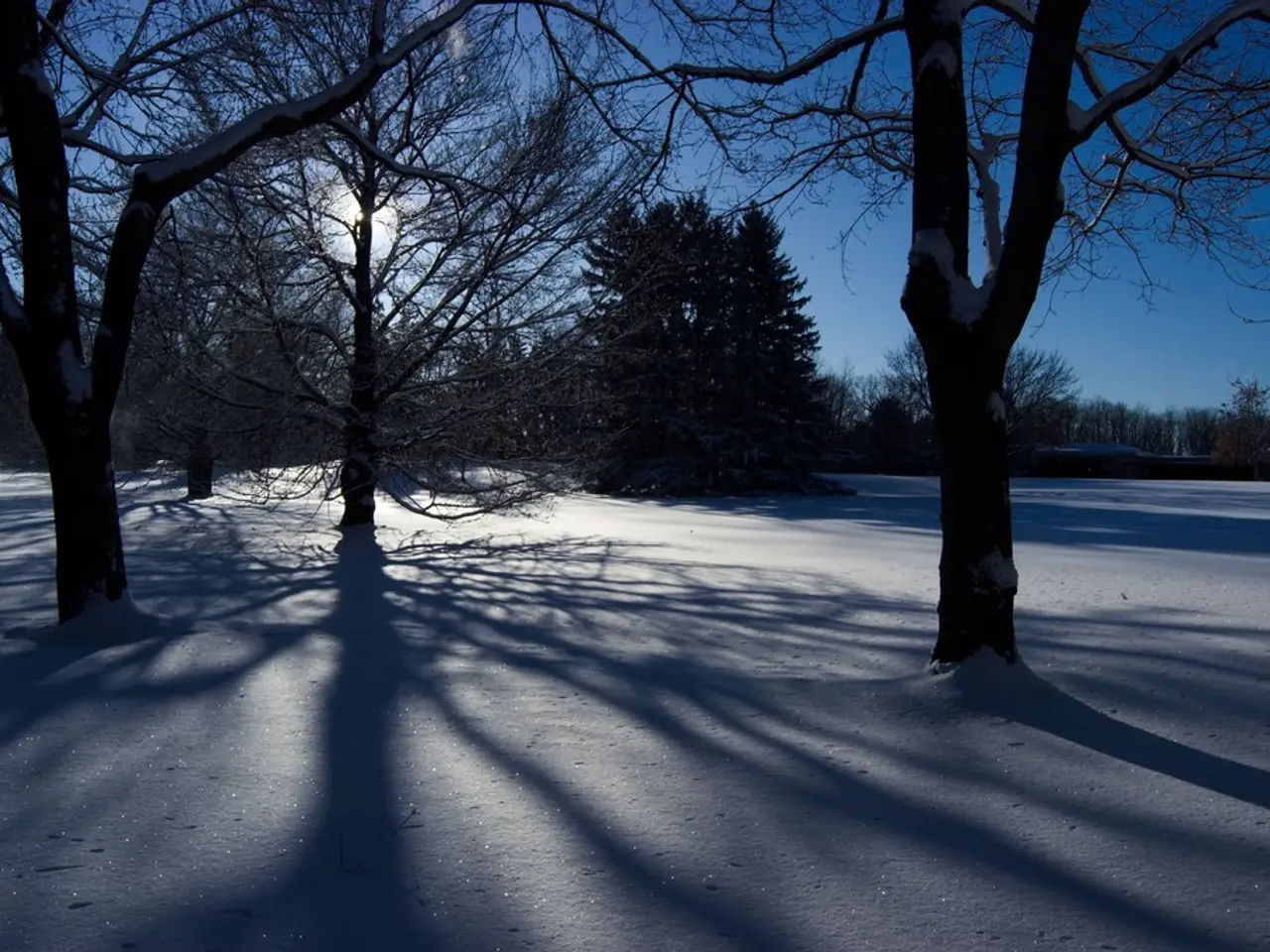Protect Your Garden Greenery through Winter with Evergreen Branches
Protecting Plants with Evergreen Boughs: A Natural Method for Winter
Winter can be a challenging time for plants, but a simple and eco-friendly solution exists to help shield them from the cold. By using evergreen boughs as a natural insulation, gardeners can protect sensitive plants and create a picturesque winter landscape.
Here's a step-by-step guide on how to use evergreen boughs effectively:
Steps to Use Evergreen Boughs for Insulation
- Gather Evergreen Boughs: Collect boughs from evergreen trees like fir, spruce, or pine. These boughs are ideal because they are dense and can provide good protection against cold and wind.
- Prepare the Area: Clear the area around your sensitive plants of any debris or mulch that might interfere with the evergreen boughs.
- Create a Barrier: Place the evergreen boughs around the base of the plants in a circular pattern, overlapping them slightly to ensure there are no gaps. The boughs act as a barrier to wind and cold, trapping warmth and preventing frost from reaching the roots and lower stems of the plants.
- Secure the Boughs: You can use plant stakes or twine to keep the boughs in place, especially if they are prone to blowing away in the wind.
- Monitor and Maintain: Check the boughs periodically to ensure they remain in place and are not causing any moisture issues. You may need to add more boughs if the weather becomes particularly harsh.
- Remove in Spring: Once winter has passed, remove the evergreen boughs to allow sunlight and air to reach the plants again.
Additional Tips
- Mulching: Consider combining the evergreen boughs with other mulching materials like straw or bark chips for added insulation.
- Frost Protection: Use this method in conjunction with other frost protection methods, such as cloches or frost cloth, for enhanced protection.
- Plant Selection: Ensure that the plants being protected are suitable for this method. Delicate seedlings might not benefit from heavy boughs.
Evergreen boughs offer numerous benefits for plants during winter. They act as a windbreak, reducing exposure to cold, dry air and helping plants retain moisture. The boughs also provide a protective barrier against freezing temperatures, drying winds, and heavy snow. Evergreen boughs keep ice from forming directly on the plant, reducing the risk of cold damage. Additionally, they help shed excess moisture, keeping frost from forming directly on stems and leaves.
In windy areas, evergreen boughs can be weighted down slightly with small stones or additional greenery to keep them in place. Heavy snow can crush delicate plants, but evergreen boughs create a light, flexible cover that helps distribute the weight of snow more evenly. Unlike plastic covers, evergreen boughs allow airflow, preventing mold and rot. If needles have fallen, they can be left as mulch to enrich the soil.
However, it's essential to remember that leaving evergreen boughs on too long can smother plants or create damp conditions that invite disease. It's best to remove them as soon as the risk of hard frost has passed in early spring to allow new growth to emerge.
This natural insulation method not only protects your plants but also contributes to a beautiful winter landscape. Whether you're a seasoned gardener or just starting out, using evergreen boughs to insulate your plants is a simple, effective, and environmentally-friendly solution.
This article was written by Bonnie Ferrero, who embodies a holistic approach to life, dedicated to service, growth, and well-being. Bonnie's interests include hiking, cooking, gardening, and home decorating. Marion Owen, known as The UpBeet Gardener, also recommends using evergreen boughs as a natural insulation for plants that are sensitive to cold.
- By gathering evergreen boughs from trees like fir, spruce, or pine, home-and-garden enthusiasts can create a natural insulation to protect their plants from winter's cold and wind.
- To effectively use evergreen boughs as insulation, gardeners should clear debris around sensitive plants, place the boughs in a circular pattern around the bases, overlap them slightly, and secure them with stakes or twine.
- In addition to protecting plants, evergreen boughs also add a decorative touch to the home-and-garden lifestyle, contributing to a picturesque winter landscape.
- After winter has passed, it's important to remove the evergreen boughs to allow sunlight and air to reach the plants again, but they can be left as mulch to enrich the soil.





